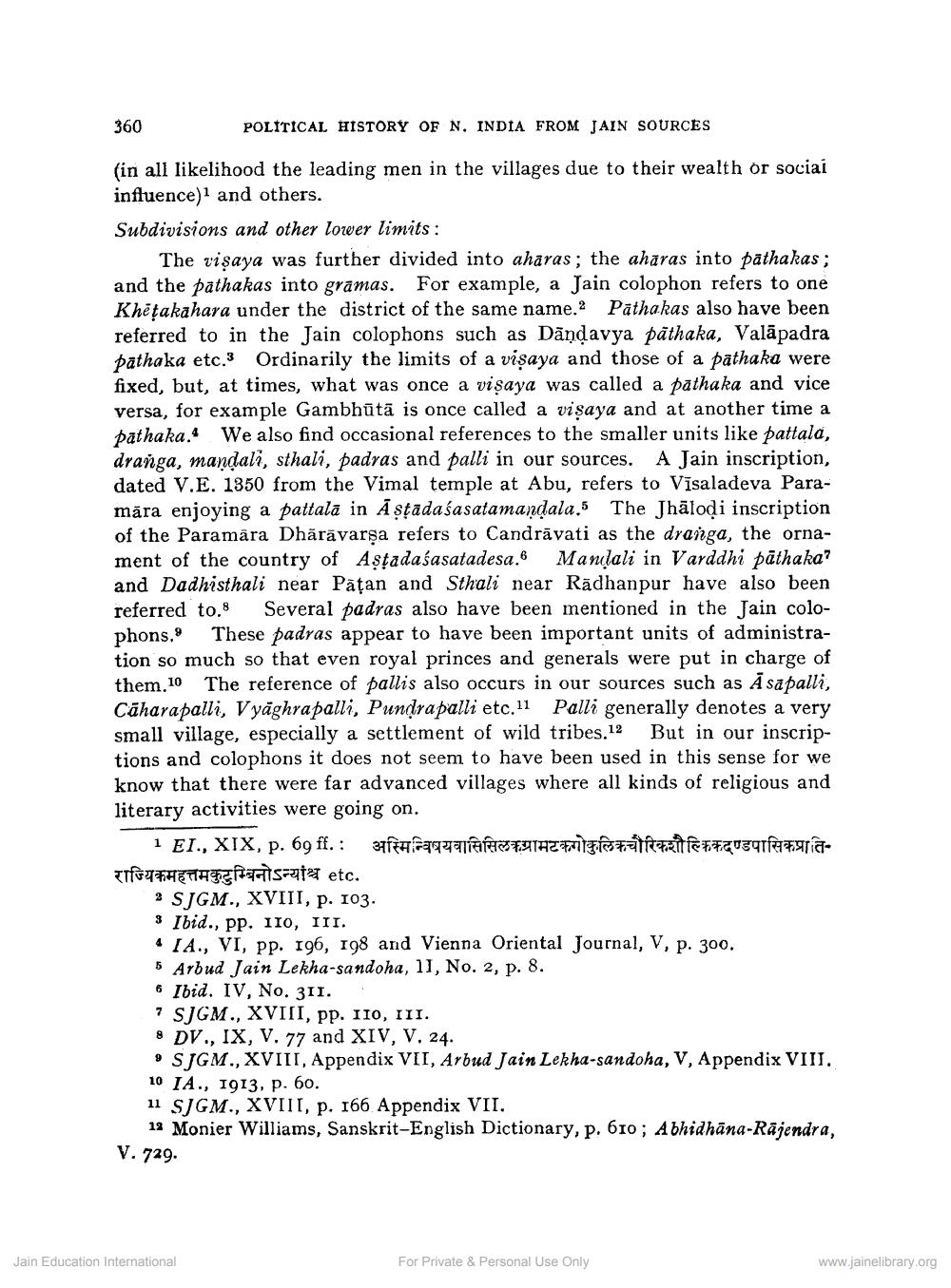________________
360
POLITICAL HISTORY OF N. INDIA FROM JAIN SOURCES
(in all likelihood the leading men in the villages due to their wealth or sociai influence) and others. Subdivisions and other lower limits :
The vişaya was further divided into aharas; the ahāras into pathakas; and the pathakas into gramas. For example, a Jain colophon refers to one Khēțakahara under the district of the same name.2 Pathakas also have been referred to in the Jain colophons such as Dāndavya păthaka, Valāpadra pathaka etc.3 Ordinarily the limits of a visaya and those of a pathaka were fixed, but, at times, what was once a visaya was called a pathaka and vice versa, for example Gambhūtā is once called a vişaya and at another time a pathaka. We also find occasional references to the smaller units like pattala, dranga, mandali, sthali, padras and palli in our sources. A Jain inscription, dated V.E. 1350 from the Vimal temple at Abu, refers to Vīsaladeva Paramāra enjoying a pattala in Āstādaśasatamandala. The Jhāloại inscription of the Paramāra Dhārāvarşa refers to Candravati as the dranga, the ornament of the country of Asgadaśasatadesa.6 Mandali in Varddhi pathaka? and Dadhisthali near Pāțan and Sthali near Rādhanpur have also been referred to.8 Several padras also have been mentioned in the Jain colophons. These padras appear to have been important units of administration so much so that even royal princes and generals were put in charge of them.16 The reference of pallis also occurs in our sources such as Āsapalli, Cāharapalli, Vyāghrapalli, Pundrapalli etc.11 Palli generally denotes a very small village, especially a settlement of wild tribes.12 But in our inscriptions and colophons it does not seem to have been used in this sense for we know that there were far advanced villages where all kinds of religious and literary activities were going on.
1 EI., XIX, p. 69 ff.: 3 294a 1AZAastattitfe ZUSTIEFHETTATES 12T etc.
2 SJGM., XVIII, p. 103. 3 Ibid., pp. 110, III. 4 IA., VI, pp. 196, 198 and Vienna Oriental Journal, V, p. 300. 5 Arbud Jain Lekha-sandoha, 11, No. 2, p. 8. 6 Ibid. IV, No. 311. 7 SJGM., XVIII, pp. 110, III. 8 DV., IX, V. 77 and XIV, V, 24.
SJGM., XVIII, Appendix VII, Arbud Jain Lekha-sandoha, V, Appendix VIII. 10 IA., 1913, p. 60. 11 SJGM., XVIII, p. 166 Appendix VII.
12 Monier Williams, Sanskrit-English Dictionary, p. 610; Abhidhāna-Rajendra, V. 729.
Jain Education International
For Private & Personal Use Only
www.jainelibrary.org




